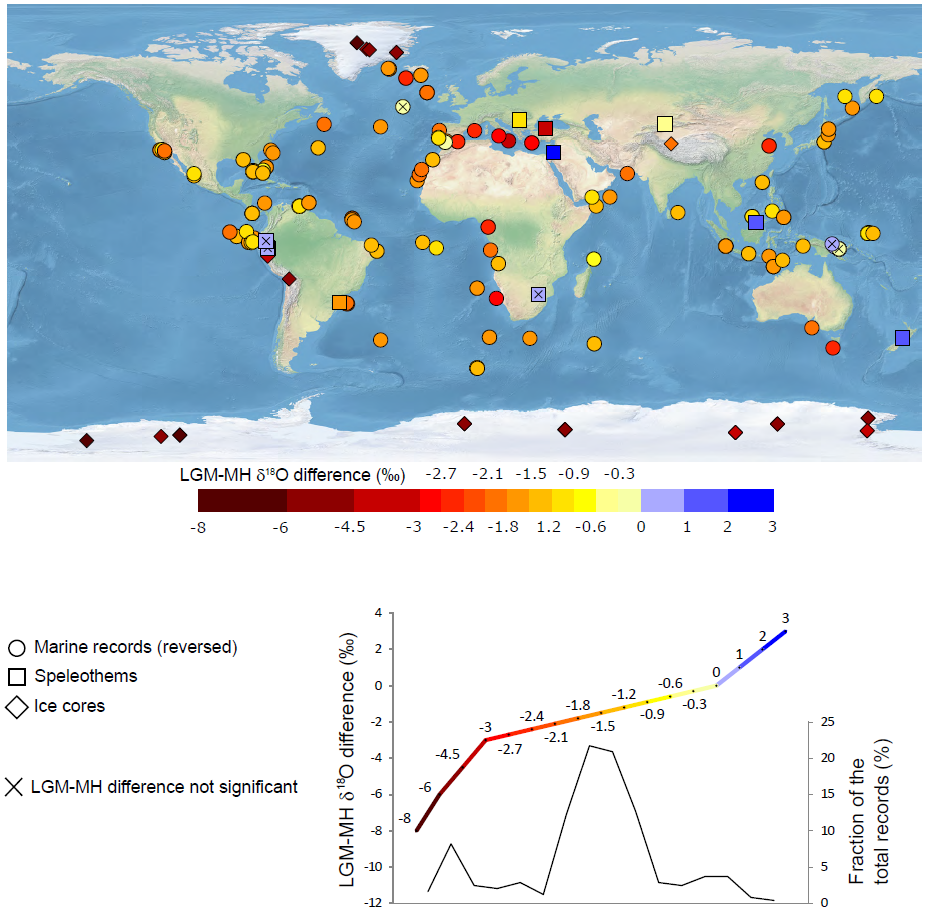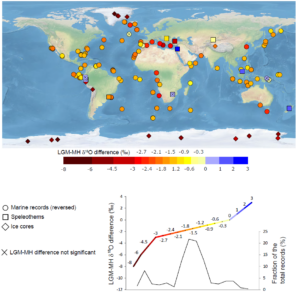Past climate is an important benchmark to assess the ability of climate models to simulate key processes and feedback. Model–data comparisons can help to constrain the uncertainties associated with transfer functions. We have put together a global database of proxy records of oxygen (d18O), hydrogen (dD) and carbon (d13C) stable isotopes from different archives: ocean and lake sediments, corals, ice cores, speleothems and tree-ring cellulose. Source records were obtained from the georeferenced PANGAEA and NOAA libraries, complemented by additional data obtained from a literature survey. About 3000 source records were screened for chronological information and temporal resolution of proxy records. Altogether, this database consists of hundreds of dated d18O, d13C and dD records in a standardized simple text format, comple-mented with a metadata Excel catalog. This compilation effort highlights the need to homogenize and structure the format of datasets and chronological information as well as enhance the distribution of published datasets that are currently highly fragmented and scattered. In the last part, we illustrate the type of application allowed by our database by comparing several key periods highly investigated by the paleoclimate community. We focus on records spanning the past 200 years, the mid-Holocene (MH, 5.5–6.5 ka; calendar kiloyears before 1950), the Last Glacial Maximum (LGM, 19– 23 ka), and those spanning the last interglacial period (LIG, 115–130 ka). Basic statistics have been applied to characterize anomalies between these different periods. Most changes from the MH to present day and from LIG to MH appear statistically insignificant. Significant global differences are reported from LGM to MH with regional discrepancies in signals from different archives and complex patterns.

T. Bolliet, P. Brockmann, V. Masson-Delmotte V., F. Bassinot F., V. Daux, D. Genty, A. Landais, M. Lavrieux, E. Michel, P. Ortega, C. Risi, D. Roche, F. Vimeux, C. Waelbroeck Clim. Past. 12, 1693-1719 and http://climateproxiesfinder.ipsl.fr


